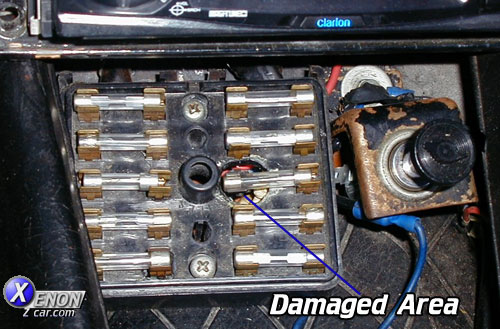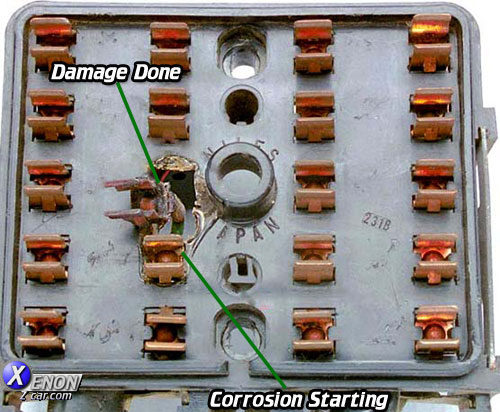S30 Early Z Car Fuse Block Melt Down Problem

The early Z cars have a common problem where the fuse block plastic melts due to corrosion build up on the back side of the fuse block connectors where the main lead from the battery connects. When the electrical resistance caused by the corrosion reaches a certain point the metal connectors and their supporting base heat up to the point that the fuse block plastic base melts to the point that either the fuse end connector comes loose or a fusible link in the wiring harness fails.
If the main fusible link between the fuse block and the battery malfunctions or a previous owner has replaced the fusible link with a non-fusible wire, there can occur a costly wiring harness melt down under the dash or in the engine compartment.
New owners need to be alert for this potentially serious problem hidden out of view. Visually check the fuse block before buying a used 240Z. Fuse blocks with modest damage can often be repaired if detected in time.

Typical damage on corroded 240Z fuse block
The corrosion starts here because the fuse clips are made of brass, and the terminal rivets appear to be steel. They are not soldered together, but depend upon metal to metal contact. These are "dissimilar metals", and corrosion starts working between the rivet head and the fuse clip. Corrosion = resistance = heat, hence melting plastic and melting at the ends of the fuse internally.
Repair
The fuse box can be replaced but it makes sense to try to repair them because the cost of a new one is anywhere from $80-$100.
If the plastic is still in fair shape in the fuse box, one can fix the problem by removing the fuse clips contacts by using a small screw driver to depress the little barbs on the sides of the clips and the push them out the back of the fusebox. This enables you to clean and solder the clips to the rivets without melting the plastic.
Repairs to the plastic base can be made at this time using JB Weld epoxy. JB Weld has a high melting temperature, much higher than the original plastic. The tension that the fuse clips have is also important, so carefully reform the clips so that they firmly hold the fuse.
If the plastic base is in bad shape, you can "bypass" the fuse box by using a 20 amp rated external fuse holder spliced into the particular circuit. The external fuse holder can then be hidden nicely behind the fuse box.
